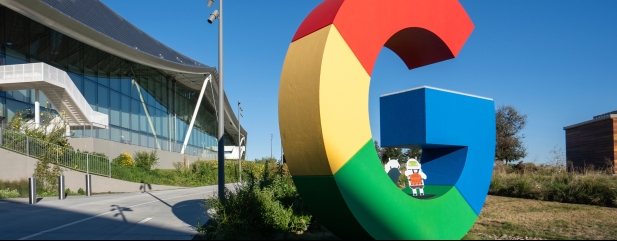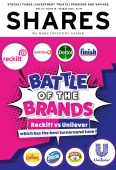Archived article
Please note that tax, investment, pension and ISA rules can change and the information and any views contained in this article may now be inaccurate.
How did latest US mega-cap tech earnings shape-up?

If we’re in for leaner times as recession risks rise, it’s quarters like this that will remind investors not to bet against big tech. We’ve now had latest quarterly numbers from Apple (AAPL:NASDAQ), Amazon (AMZN:NASDAQ), Meta Platforms (META:NASDAQ) and Microsoft (MSFT:NASDAQ), led by Alphabet (GOOG:NASDAQ) previously (24 April), and they are leading US markets higher with vigour.
Both the S&P 500 and Nasdaq have all but wiped-out losses braved by investors since Donald Trump’s tariffs bombshell on ‘Liberation Day’ (2 April) thanks to earnings beats, largely confident outlooks, and firm reminders that these companies are built to prosper against all kinds of market backcloths.
Investors were hoping for reaffirmed optimism that the AI wheels are not coming off and got it. That huge AI investment was paying off, check. That talk of possible recession hadn’t blown a hole in online advertising spending, tick. And that Trump’s tariffs policies are not ripping chunks out of revenue streams. That was largely a check, with the caveat that the big tech players with most consumer spending exposure – namely Apple and Amazon – remain wary given the current uncertainty surrounding the health of the US economy.
TRADE TENSION IMMUNITY
They face growing pressure from trade tensions and shifting spending patterns, and if a recession does emerge, there will be impacts on advertising budgets and consumer spending, and some readjustment even if not.
A wider note of caution is these earnings, while undoubtedly a positive, all related to a three-month period before most of the tariff action took place.
‘Apple quantified the impact of the tariffs as a $900 million (extra cost) next quarter, around one percentage point of margin,’ said Matt Ward, co-manager of the AXA Framlington Global Technology Fund (B4W52V5), ‘and Amazon took a similar sized margin hit this quarter on inventory pull forwards.’
To sidestep some of the tariffs harm, Apple has been shifting significant iPhone manufacturing from China to India, although this plan was in place long before Trump’s re-election anyway. Amazon’s online shopping platform is its most visible part and sourcing an estimated 25% of the products it sells there come from China, the company’s caution is understandable, but Amazon’s cloud computing business AWS is the company’s real growth driver.
There may have been some disappointment that unlike at Microsoft and Alphabet, growth for the first three months of the year in this part of the business was a smidge below expectations.
Capital spending is continuing, and overall spending plans among the hyper-scalers, large cloud service providers that offer massive computing resources, storage, and networking infrastructure to support enterprise-scale applications and services, have increased this quarter, despite fears of cuts. As noted by Morgan Stanley this week, estimates for capex growth in 2025 among the US cloud hyper-scalers have increased from 31% to 38% over the last month despite fears of spending being cut in a more uncertain macro environment.
Amazon CEO Andy Jassy, reminded markets of the nascent stage of the cloud transition so far, saying on the conference call that: ‘It’s useful to remember that more than 85% of the global IT spend is still on premises, so not in the cloud yet.’
SPENDING TAPS RUN HOTTER
Meta has been reaping the benefits of AI integration across its business, helping to direct more relevant content to users, thus keeping them engaged and serving up more relevant ads, yet upping its already hefty AI investment capex, from $62.5 billion in January to $68 billion, at the midpoint of ranges, is a big rebuff to those that thought AI spending might tail off.
Hyper-scaler cloud/AI platforms continue to talk of capacity constraints limiting growth this quarter, while Microsoft mentioned intra-quarter pick-ups in demand and continued increases in the contribution of AI to growth. ‘We think the commentary this quarter bodes well for continued spending growth through 2025,’ said AXA’s Ward.
If latest quarterly reports tell us anything it is that valuation compression is behind sluggish share price performance this year, not growth and earnings. The performance of Alphabet, Amazon, Apple, Meta and Microsoft has averaged -8.7% year to date, while average next 12-month PEs (price to earnings) have fallen 14%, from 29.8 at the start of 2025 to 25.6 now.
Chip designer Nvidia (NVDA:NASDAQ) will post its next quarterly results on 28 May, and assuming they project more positives, they could cement renewed optimism around AI and tech.
Important information:
These articles are provided by Shares magazine which is published by AJ Bell Media, a part of AJ Bell. Shares is not written by AJ Bell.
Shares is provided for your general information and use and is not a personal recommendation to invest. It is not intended to be relied upon by you in making or not making any investment decisions. The investments referred to in these articles will not be suitable for all investors. If in doubt please seek appropriate independent financial advice.
Investors acting on the information in these articles do so at their own risk and AJ Bell Media and its staff do not accept liability for losses suffered by investors as a result of their investment decisions.
Issue contents
Dan Coatsworth
Editor's View
Feature
Great Ideas
News
- The first-quarter earnings season was a mixed one for the UK’s big banks
- Latest payroll figures suggest US economy is on a firm footing despite tariffs
- Can Walmart mitigate tariff-related price shocks?
- CVS shares boosted by benign working paper from the competition watchdog
- Buffett surprises markets after stepping down as CEO after 60 years at the helm
- Clarkson shares down 20% as uncertainty impacts maritime demand
 magazine
magazine








